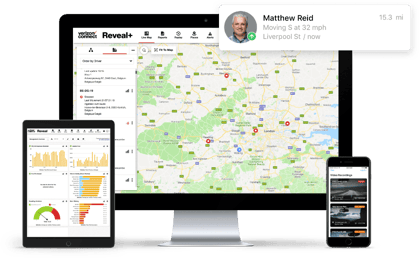9 Secrets to Reducing your Fleet Expenses
As a fleet owner, your day-to-day costs can quickly add up. What you don’t know is there are further hidden, expensive...
Read more
“Idling” refers to running a vehicle’s engine when it’s not moving, such as when you’re at a red light or stuck in traffic. Idling is part of the process of driving a car and is a common occurrence for most drivers. However, idling may not be the best for your car, fuel consumption, or the environment.
Reducing the amount of time vehicles are idling is a simple way to maintain and even increase fuel economy among fleet vehicles, especially as fuel prices rise.
Letting a vehicle idle does more damage to the engine than starting and stopping. In fact, running an engine at low speed (idling) causes twice the wear on internal parts compared to driving at regular speeds. (1)
Excessive idling can also cause a buildup of carbon residue in a truck’s engine. Because the engine is not operating at its optimal temperature when idling, fuel is only partially combusted, leading to fuel residue buildup on the cylinder walls. This can further damage engine components, including spark plugs and exhaust systems, increasing maintenance costs and shortening the life of the engine.
Idling vehicles can use more gas than you might realize. This directly affects how much you spend on gas and how often you need to refuel. However, the amount of fuel a vehicle consumes while idling varies depending on factors such as its weight, engine size, and the type of fuel it takes (“Idling can use up to 2 litres of fuel per hour, emitting over 5 kg of CO2 (2). . Some states and local governments even have anti-idling laws that restrict engine idling and impose fines on drivers who violate them.
Download the 5 ways to reduce fuel costs eBook to learn how fleet management solutions can help you monitor the 5 key factors that can contribute to wasted fuel.
Idling and wasted fuel also have a serious environmental impact. Engine idling is particularly bad for air quality, and the World Health Organisation estimates that air pollution is responsible for 4.2 million deaths each year (3) and engine idling is one thing that contributes to this bad air quality.
According to Public Health England, “air pollution is the biggest environmental threat to health in the UK, with between 28,000 and 36,000 deaths a year attributed to long-term exposure” (4). Also, there is strong evidence that air pollution causes the development of important diseases(5).
Also PHE states that “despite all the progress we have made at national and local levels, transport remains one of the largest sources of air pollution in the UK, and poor air quality could cost health and social care services in England £5.3 billion by 2035” (6).
According to the Department for Energy Security & Net Zero, “the domestic transport sector remains the largest emitting sector in the UK, accounting for 29.1% of all greenhouse gas emissions”(7) and idling contributes as well.
In fact, “idling creates air pollution and is usually unnecessary. Car idling produces up to 150 balloons of exhaust emissions per minute which contains harmful chemicals like cyanide, nitrogen oxides (NOx) and tiny particles called PM2.5” (8). Emissions from engine idling are contributing to climate change and impacting air quality, which poses negative health risks for everyone.
For many people, reducing the amount of time spent with your engine running is a priority, if not a necessity. For instance, though everyone can benefit from fewer idling cars on the road, business owners who have to manage their fleet of vehicles stand to save money by reducing idling time.
Engine idling may seem harmless, but it has tremendous impacts that negatively affect everyone. It wastes a significant amount of money on fuel and puts harmful toxins into the environment. Keep idling top of mind when you’re driving so that you can do your part to reduce it.



Find out how our platform gives you the visibility you need to get more done.
As a fleet owner, your day-to-day costs can quickly add up. What you don’t know is there are further hidden, expensive...
Read moreVerizon Connect Reveal tracks the fleet data that can have a big impact on your business. These are things like where...
Read moreAt Verizon Connect, we can only provide the highest possible level of service to fleet managers and business owners by...
Read moreReveal tracks the fleet data that can have a big impact on your business. These are things like where your vehicles are...
Read more